Sukajan: From Rebel Jacket To Cult Classic
A Look Into The History Of Japan's Souvenir Jacket
Katy Perry wore it. Zayn Malik wore it. Kanye West wore it. Louis Vuitton and Gucci made their own versions of it. But it all started in one Japanese port city near Tokyo.
Japan’s sukajan, the embroidered satin college or letterman jacket you’ve no doubt seen a million times in Japan, has really come a long way: from being nothing but a wearable souvenir to covering Kanye West’s shoulders. And we’re pretty sure Kim Kardashian has touched it too. But while to many this gaudy at a glance jacket may seem like nothing but a kitsch sold at souvenir stores, it carries a long history with deep American and Japanese cultural roots. These satin jackets are also known as “souvenir jackets,” “Yokosuka jackets,” or sometimes even as “rebel jackets,” although this term seems to have fallen out of use in recent years.
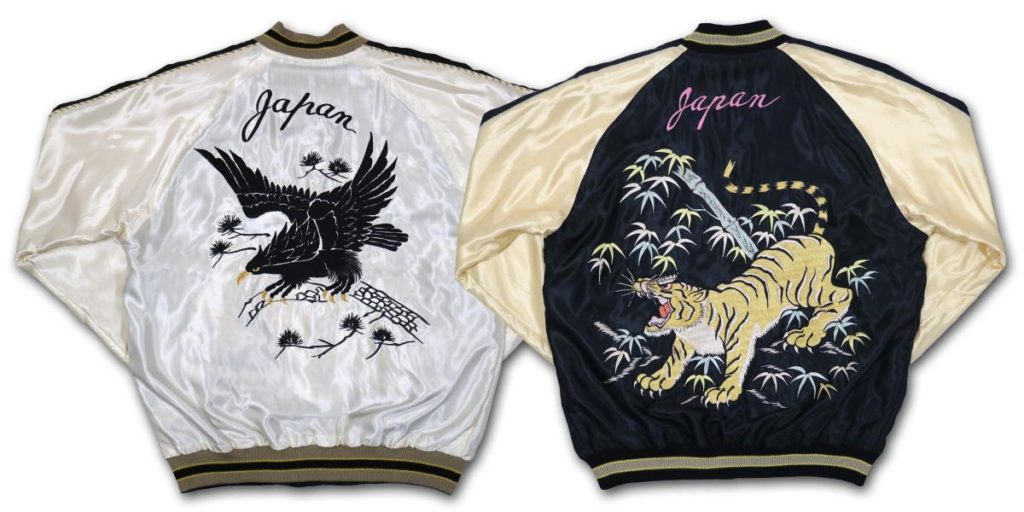 © Photo by Mikasa
© Photo by Mikasa
Simple sukajan and limited edition brand styles are available in most clothing stores in Tokyo, but if you are looking for the original, heavily embroidered type, you’ll have to head out of the city to Yokosuka — where the sukajan originated.
From a souvenir to a wearable statement
Yokosuka, Kanagawa became renowned for sukajan all thanks to its long military history. This area was the home of Japan’s first naval bases, naval arsenal, and, after the Second World War, home to United States Seventh Fleet and the Japanese Maritime Self-Defense Force.
View this post on Instagram
Sukajan are based on letterman or college jackets from the US, which were first popularized during the 1930s. These styles found their way to Japan during the post-war period, when departing American soldiers sought out souvenirs and ways of commemorating their time in Japan. As not many had the means or space to carry a lot of items back home with them, many turned to their clothing for inspiration. The original sukajan were often bomber jackets, simple coats, or even jackets fashioned from old parachute material, with embroidered patches featuring Japanese animals, patterns, or writing. Each jacket was typically hand-stitched — which meant that no two jackets were alike.
The original sukajan were often bomber jackets, simple coats, or even jackets […] with embroidered patches featuring Japanese animals, patterns, or writing.
In the 1950s-70s, and with the sweeping popularity of letterman jackets overseas and among the younger generations, more elaborate and colorful sukajan were produced in greater numbers. These satin jackets were not only popular with soldiers, but became an item for the working class, and a sign for young rebels as well, much like the leather biker jackets made popular by Marlon Brando, James Dean, and the punk movement. In ‘60s Japan, the sukajan became a wearable statement for many teenagers — it served as an act of defiance against the mainstream Japanese society.
View this post on Instagram
The 1980s-90s saw the sukajan become a mass produced item available at more shops than before not only in Japan but overseas as well. In the 2000s, with H&M, Forever 21, Zara, Louis Vuitton and Gucci’s own versions of the staple jacket, it saw a major return to popularity in fast and high fashion.
Ironically, however, the best quality and most highly sought after jackets are still produced in limited numbers in Yokosuka, Kanagawa.
Owning your own sukajan
The first thing you need to remember before buying any sukajan is that these are not jackets meant to be worn for warmth or protection against rain. Authentic satin jackets can suffer from water damage if not properly cared for, while rayon/synthetic jackets can withstand quite a bit of wear and tear. The embroidery will eventually start to fray overtime, so if you opt for a fast fashion version, you might only get one to two seasons out of it, while a slightly pricery one may last about four to six seasons of heavy use. If you are looking for a winter-ready sukajan, you’ll need to find one with a zipped-in liner, or one with space for a zipped sweatshirt underneath.
View this post on Instagram
Traditional sukajan are meant to fit a bit snugger than other jackets. The cuffs and hem are elasticized around the wrist and waist, while the body is often tapered to fit. Ideally, you would only be wearing a t-shirt or a single layer under a sukajan, as it’s supposed to be the highlight of the outfit, but if you aren’t a fan of tight fits, then you should try purchasing one that is two sizes bigger than you need.
Keep in mind that these jackets can also get quite pricey, so check your bank account before going to the shop. Synthetic or mass produced sukajan can cost anywhere from ¥4,000 to around ¥30,000, while boutique ones range from ¥15,000 to upwards of ¥80,000. These prices depend on the fabric, amount and detail of the embroidery, and the shop, of course. In some stores you can also find reversible sukajan, which have unique designs on both sides of the jacket.
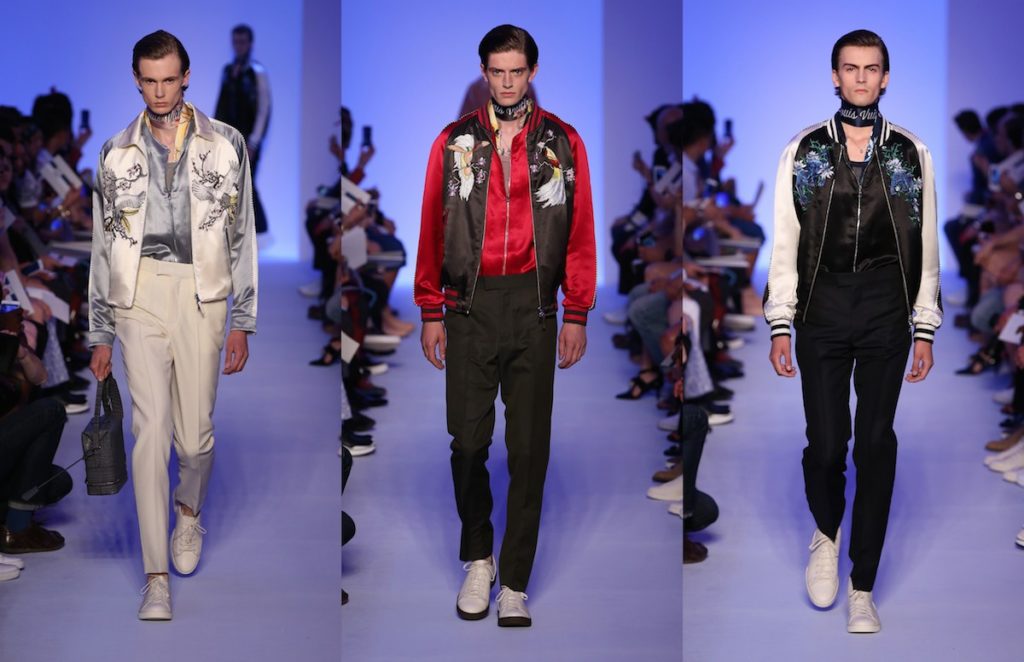
Louis Vuitton’s souvenir jackets from its Asia-inspired 2015 collection.
Where to buy your own sukajan
If you want to find the perfect sukajan, head to Dobuita Street in Yokosuka. This classic Japanese shopping street still looks like it did back when sukajan were first popularized, and is also home to plenty of amazing restaurants serving Yokosuka’s famous curry and hamburgers. This shopping street is a lot of fun, and also a great date spot, too. You’ll find many shops there that still specialize in sukajan, but there are three shops in particular that are strongly recommended.
View this post on Instagram
Fuji Military: This shop specializes in military-style clothing, mainly for men. However, sukajan are technically unisex, so don’t worry. They also have an online shop (mainly in Japanese), so you can check out their styles in advance as well.
Mikasa Sukajan is the sukajan exclusive webshop of Mikasa vol.2, an import fashion and accessories store that has a great selection of jackets for sale. Their jackets are quite durable, and the colors are very vibrant, so they tend not to look their age.
Prince Co. was founded in 1955 and specializes in the original satin jackets. The store only offers unique jackets produced in limited numbers. In other words, this one’s the real deal.
If you’re inspired to be a rebel without a cause but with a cool sukajan, visit any of the above mentioned stores and you’ll surely find the perfect one to suit you! Then please, share this article with Kanye, Katy and Zayn. They deserve to know where their satin bombers came from.












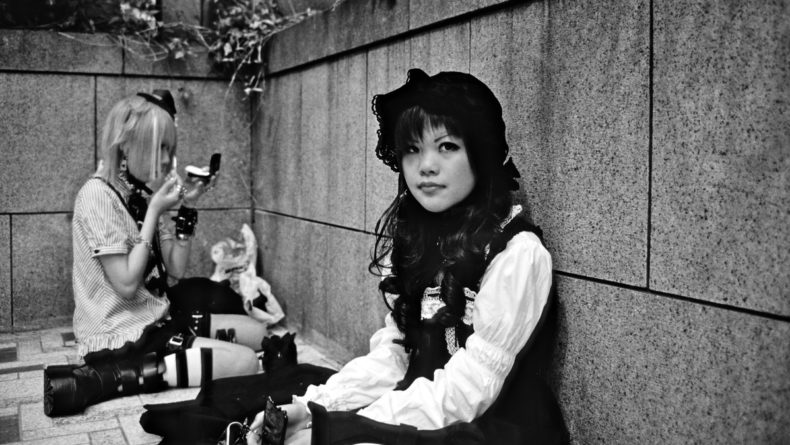
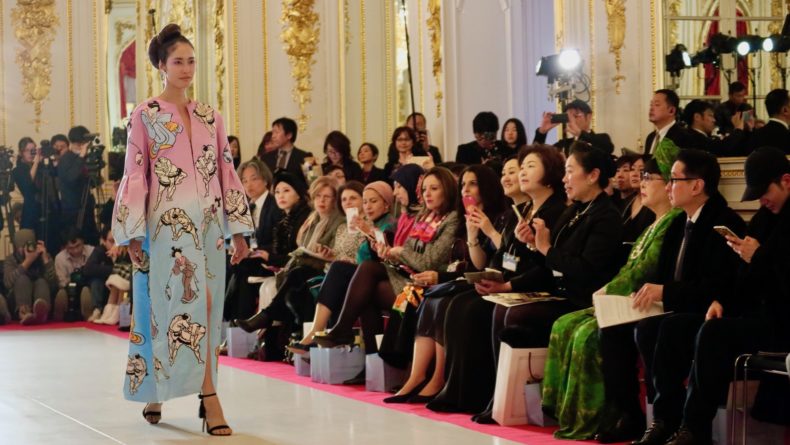
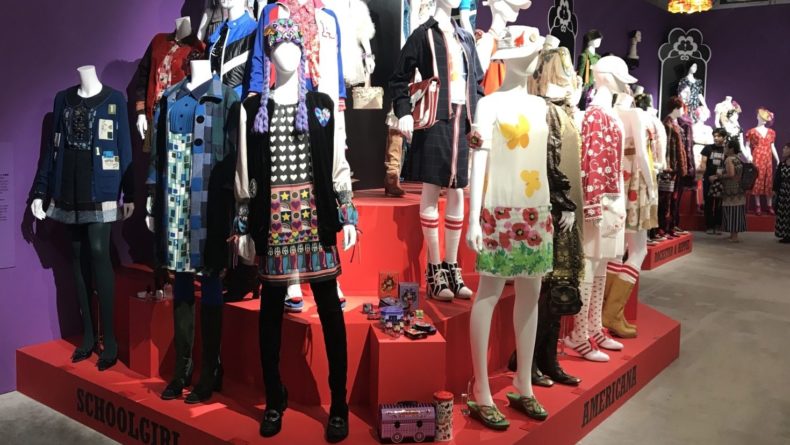
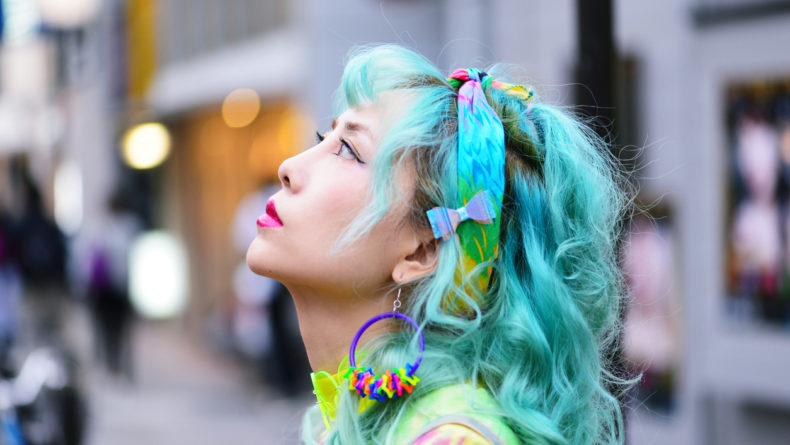
Leave a Reply